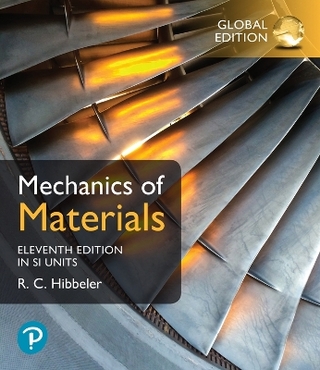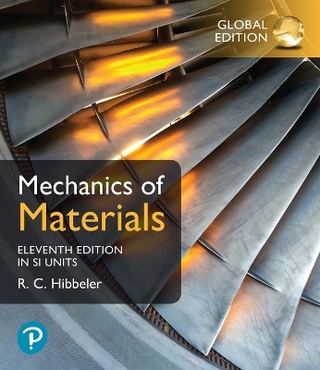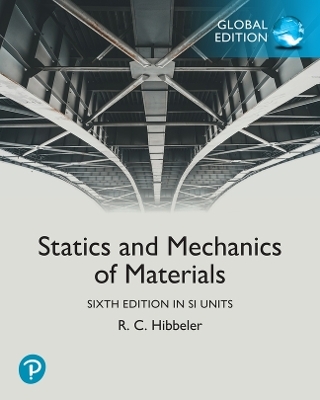
Principles and Applications of Tribology 2e
John Wiley & Sons Inc (Hersteller)
978-1-118-40302-0 (ISBN)
- Keine Verlagsinformationen verfügbar
- Artikel merken
Dr Bhushan is Ohio Eminent Scholar and The Howard D. Winbigler Professor as well as Director of the Nanoprobe Laboratory for Bio- & Nanotechnology and Biomimetics at The Ohio State University. During his career he has received a number of awards and accolades as well as being central to teaching and formulating the curriculum in Tribology-related topics. He is a Fellow and Life Member of American Society of Mechanical Engineers, Society of Tribologists and Lubrication Engineers, Institute of Electrical and Electronics Engineers, as well as various other professional societies.
Forward Preface 1. Introduction 1.1 Definition and History of Tribology 1.2 Industrial Significance of Tribology 1.3 Origins and Significance of Micro/Nanotribology 1.4 Organization of the Book References 2. Structure and Properties of Solids 2.1 Introduction 2.2 Atomic Structure, Bonding and Configuration 2.2.1 Individual Atoms and Ions 2.2.2 Molecules, Bonding and Atomic Coordination 2.3 Crystalline Structures 2.3.1 Planar Structures 2.3.2 Nonplanar Structures 2.4 Disorder in Solid Structures 2.4.1 Point Defects 2.4.2 Line Defects (Dislocations) 2.4.3 Surfaces/Internal Boundaries 2.4.4 Solid Solutions 2.5 Atomic Vibrations and Diffusions 2.6 Phase Diagrams 2.7 Microstructures 2.8 Elastic and Plastic Deformation, Fracture and Fatigue 2.8.1 Elastic Deformation 2.8.2 Plastic Deformation 2.8.3 Plastic Deformation Mechanisms 2.8.4 Fracture 2.8.5 Fatigue 2.9 Time-Dependent Viscoelastic/Viscoplastic Deformation 2.9.1 Description of Time-Dependent Deformation Experiments References 3. Solid Surface Characterization 3.1 Nature of Surfaces 3.2 Physico-Chemical Characteristics of Solid Surfaces 3.2.1 Deformed Layer 3.2.2 Chemically Reacted Layer 3.2.3 Physisorbed Layer 3.2.4 Chemisorbed Layer 3.2.5 Surface Tension, Surface Energy, and Wetting 3.2.6 Methods of Characterization of Surface Layers 3.3 Analysis of Surface Roughness 3.3.1 Average Roughness Parameters 3.3.2 Statistical Analyses 3.3.3 Fractal Characterization 3.3.4 Practical Considerations in Measurement of Roughness Parameters 3.4 Measurement of Surface Roughness 3.4.1 Mechanical Stylus Method 3.4.2 Optical Methods 3.4.3 Scanning Probe Microscopy (SPM) Methods 3.4.4 Fluid Methods 3.4.5 Electrical Method 3.4.6 Electron Microscopy Methods 3.4.7 Analysis of Measured Height Distribution 3.4.8 Comparison of Measurement Methods 3.5 Closure References 4. Contact Between Solid Surfaces 4.1 Introduction 4.2 Analysis of the Contacts 4.2.1 Single Asperity Contact of Homogeneous and Frictionless Solids 4.2.2 Single Asperity Contact of Layered Solids in Frictionless and Frictional Contacts 4.2.2 Multiple Asperity Dry Contacts 4.3 Measurement of the Real Area of Contact 4.3.1 Review of Measurement Techniques 4.3.2 Comparison of Different Measurement Techniques 4.3.2 Typical Measurements 4.4 Closure References 5. Adhesion 5.1 Introduction 5.2 Solid-Solid Contact 5.2.1 Covalent Bond 5.2.2 Ionic or Electrostatic Bond 5.2.3 Metallic Bond 5.2.4 Hydrogen Bond 5.2.5 van der Waals Bond 5.2.6 Free Surface Energy Theory of Adhesion 5.2.7 Polymer Adhesion 5.3 Liquid Mediated Contact 5.3.1 Idealized Geometries 5.3.2 Multiple -- Asperity Contacts 5.4 Closure References 6. Friction 6.1 Introduction 6.2 Solid-Solid Contact 6.2.1 Rules of Sliding Friction 6.2.2 Basic Mechanisms of Sliding Friction 6.2.3 Other Mechanisms of Sliding Friction 6.2.4 Friction Transitions During Sliding 6.2.5 Static Friction 6.2.6 Stick-slip 6.2.7 Rolling Friction 6.3 Liquid Mediated Contact 6.4 Friction of Materials 6.4.1 Friction of Metals and Alloys 6.4.2 Friction of Ceramics 6.4.3 Friction of Polymers 6.4.4 Friction of Solid Lubricants 6.5 Closure References 7. Interface Temperature of Sliding Surfaces 7.1 Introduction 7.2 Thermal Analysis 7.2.1 Fundamental Heat Conduction Solutions 7.2.2 High Contact-Stress Condition (Ar/Aa ~ 1) (Individual Contact) 7.2.3 Low Contact-Stress Condition (Ar/Aa " 1) (Multiple Asperity Contact) 7.3 Interface Temperature Measurements 7.3.1 Thermocouple and Thin-Film Temperature Sensors 7.3.2 Radiation Detection Techniques 7.3.3 Metallographic Techniques 7.3.4 Liquid Crystals 7.4 Closure References 8. Wear 8.1 Introduction 8.2 Types of Wear Mechanisms 8.2.1 Adhesive Wear 8.2.2 Abrasive Wear (by Plastic Deformation and Fracture) 8.2.3 Fatigue Wear 8.2.4 Impact Wear 8.2.5 Chemical (Corrosive) Wear 8.2.6 Electrical-Arc-Induced Wear 8.2.7 Fretting and Fretting Corrosion 8.3 Types of Particles Present in Wear Debris 8.3.1 Plate-Shaped Particles 8.3.2 Ribbon-Shaped Particles 8.3.3 Spherical Particles 8.3.4 Irregularly Shaped Particles 8.4 Wear of Materials 8.4.1 Wear of Metals and Alloys 8.4.2 Wear of Ceramics 8.4.3 Wear of Polymers 8.5 Closure References Appendix 8.A Indentation Cracking in Brittle Materials 8.A.1 Blunt Indenter 8.A.2 Sharp Indenter Appendix 8.B Analysis of Failure Data Using Weibull Distribution 8.B.1 General Expression of the Weibull Distribution 8.B.2 Graphical Representation of a Weibull Distribution Appendix 8.C Methods for Establishing PV Limit 9. Fluid Film Lubrication 9.1 Introduction 9.2 Regimes of Fluid Film Lubrication 9.2.1 Hydrostatic Lubrication 9.2.2 Hydrodynamic Lubrication 9.2.3 Elastohydrodynamic Lubrication 9.2.4 Mixed Lubrication 9.2.5 Boundary Lubrication 9.3 Viscous Flow and Reynolds Equations 9.3.1 Viscosity and Newtonian Fluids 9.3.2 Fluid Flow 9.4 Hydrostatic Lubrication 9.5 Hydrodynamic Lubrication 9.5.1 Thrust Bearings 9.5.2 Journal Bearings 9.5.3 Squeeze Film Bearings 9.5.4 Gas-Lubricated Bearings 9.6 Elastohydrodynamic Lubrication 9.6.1 Forms of Contacts 9.6.2 Line Contact 9.6.3 Point Contact 9.6.4 Thermal Correction 9.6.5 Lubricant Rhelogoy 9.7 Closure References 10. Boundary Lubrication and Lubricants 10.1 Introduction 10.2 Boundary Lubrication 10.3 Liquid Lubricants 10.3.1 Principal Classes of Lubricants 10.3.1 Physical and Chemical Properties of Lubricants 10.3.2 Additives 10.4 Ionic Liquids 10.4.1 Composition of Ionic Liquids 10.4.2 Properties of Ionic Liquids 10.4.3 Lubrication Mechanisms of ILs 10.4.4 Issues on the Applicability of Ionic Liquids as Lubricants 10.5 Greases 10.6 Closure References 11. Nanotribology 11.1 Introduction 11.2 SFA Studies 11.2.1 Description of an SFA 11.2.2 Static (Equilibrium), Dynamic and Shear Properties of Molecularly Thin Liquid Films 11.3 AFM/FFM Studies 11.3.1 Description of AFM/FFM and Various Measurement Techniques 11.3.2 Surface Imaging, Friction, and Adhesion 11.3.3 Wear, Scratching, Local Deformation, and Fabrication/Machining 11.3.4 Indentation 11.3.5 Boundary Lubrication 11.4 Atomic-Scale Computer Simulations 11.4.1 Interatomic Forces and Equations of Motion 11.4.2 Interfacial Solid Junctions 11.4.3 Interfacial Liquid Junctions and Confined Films 11.5 Closure References 12. Friction and Wear Screening Test Methods 12.1 Introduction 12.2 Design Methodology 12.2.1 Simulation 12.2.2 Acceleration 12.2.3 Specimen Preparation 12.2.4 Friction and Wear Measurements 12.3 Typical Test Geometries 12.3.1 Sliding Friction and Wear Tests 12.3.2 Abrasion Tests 12.3.3 Rolling-Contact Fatigue Tests 12.3.4 Solid-Particle Erosion Test 12.3.5 Corrosion Tests 12.4 Closure References 13. Bulk Materials, Coatings and Surface Treatments for Tribology 13.1 Introduction 13.2 Bulk Materials 13.2.1 Metals and Alloys 13.2.2 Ceramics and Cermets 13.2.3 Ceramic-Metal Composites 13.2.4 Solid Lubricants and Self-Lubricating Solids 13.3 Coatings and Surface Treatments 13.3.1 Coating Deposition Techniques 13.3.1 Surface Treatment Techniques 13.3.3 Criteria for Selecting Coating Material/Deposition and Surface Treatment Techniques 13.4 Closure References 14. Tribological Components and Applications 14.1 Introduction 14.2 Common Tribological Components 14.2.1 Sliding-Contact Bearings 14.2.2 Rolling-Contact Bearings 14.2.3 Seals 14.2.4 Gears 14.2.5 Cams and Tappets 14.2.6 Piston Rings 14.2.6 Electrical Brushes 14.3 MEMS/NEMS 14.3.1 MEMS 14.3.2 NEMS 14.3.3 BioMEMS 14.3.4 Microfabrication Processes 14.4. Material Processing 14.4.1 Cutting Tools 14.4.2 Grinding and Lapping 14.4.3 Forming Processes 14.4.4 Cutting Fluids 14.5 Industrial Applications 14.5.1 Automotive Engines 14.5.2 Gas Turbine Engines 14.5.3 Railroads 14.5.4 Magnetic Storage Devices 14.6 Closure References 15. Green Tribology and Biomimetics 15.1 Introduction 15.2 Green Tribology 15.2.1 Twelve Principles of Green Tribology 15.2.2 Areas of Green Tribology 15.3 Biomimetics 15.3.1 Lessons from Nature 15.3.2 Industrial Significance 15.4 Closure References Problems Appendix A. Units, Conversions and Useful Relations A.1 Fundamental Constants A.2 Conversion of Units A.3 Useful Relations Subject Index
| Verlagsort | New York |
|---|---|
| Sprache | englisch |
| Maße | 150 x 250 mm |
| Gewicht | 666 g |
| Themenwelt | Technik ► Maschinenbau |
| ISBN-10 | 1-118-40302-9 / 1118403029 |
| ISBN-13 | 978-1-118-40302-0 / 9781118403020 |
| Zustand | Neuware |
| Haben Sie eine Frage zum Produkt? |
aus dem Bereich


